Severe G4 geomagnetic storm sparks northern lights across US and beyond (photos)
The speedy solar storm arrived in style, sparking stunning aurora displays as far south as California and New Mexico.
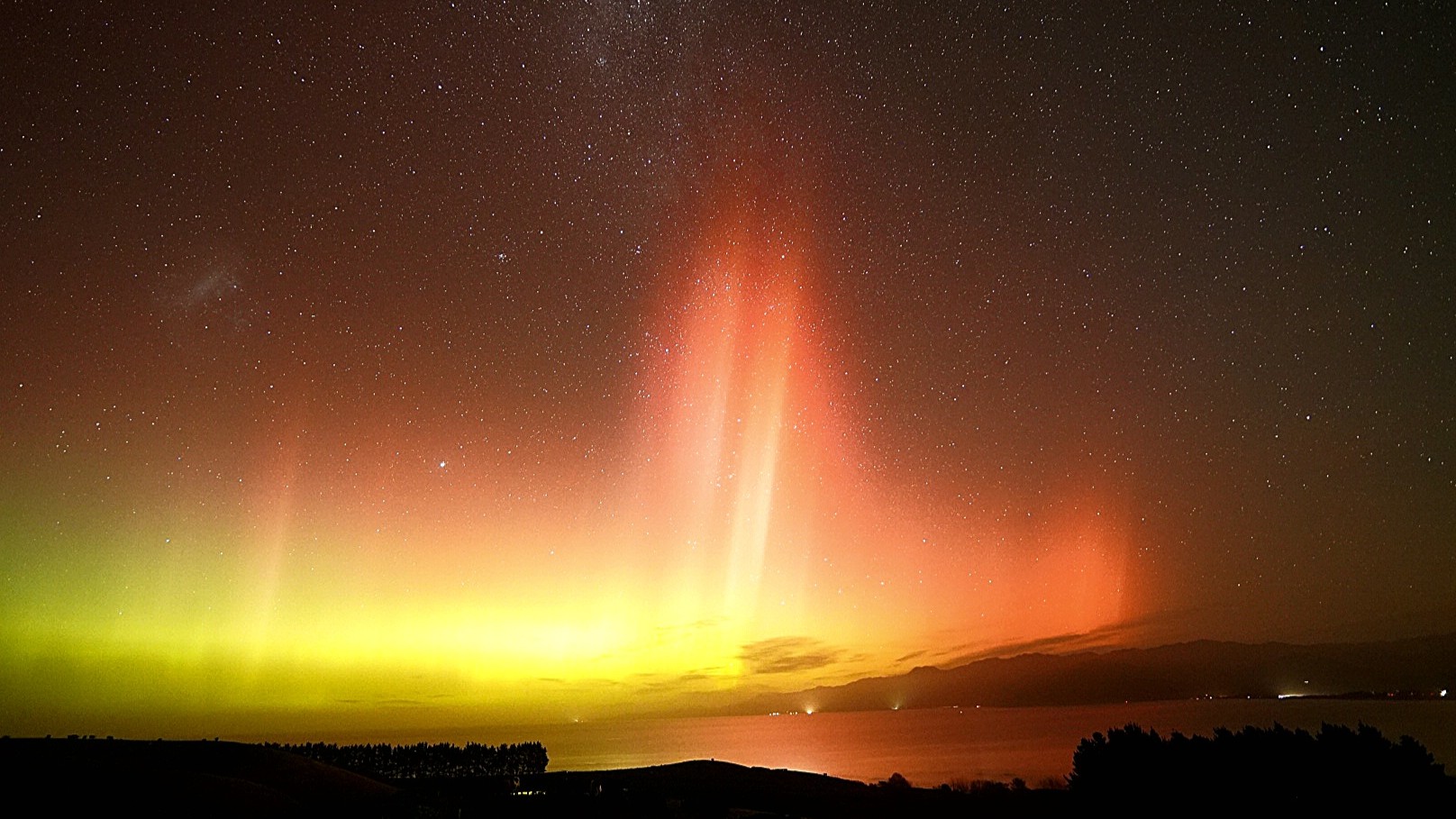
Wow, what a show!
Our planet is currently reverberating from the impact of a powerful coronal mass ejection (CME) that struck Earth head-on in the early hours of June 1 — and the resulting auroras were absolutely stunning.
The CME erupted during an M8.2 class solar flare eruption on May 30 at 8:05 p.m. EDT (00:05 GMT on May 31) and has been racing toward Earth at nearly 1,938 km/s or 4.3 million mph. When it slammed into Earth's magnetic field, the impact triggered a severe (G4) geomagnetic storm, which in turn led to striking auroras deep into mid-latitudes.
CMEs carry electrically charged atoms, known as ions. When these ions collide with Earth's magnetosphere, they can trigger geomagnetic storms — major disturbances in Earth's magnetosphere. During such storms, the ions interact with gases in Earth's atmosphere, releasing energy in the form of light. This light is observed as the northern lights, or aurora borealis, in the Northern Hemisphere, and the southern lights, or aurora australis, in the Southern Hemisphere. Geomagnetic storms are classified using a G-scale that measures their intensity, ranging from G1 for minor storms to G5, the most extreme.
The severe geomagnetic storm conditions reached last night were relished by aurora chasers in both the Northern and Southern hemispheres (those who were still awake anyway). It's likely that the active geomagnetic storm conditions will continue for some time, which is good news for those in Europe, where the sun was already up when this G4 storm began.
"G4 storm conditions reached! We are still in the early part of the CME and the ongoing geomagnetic storm, more to come. 12 hours to go for Europe," aurora chaser Jure Atanackov wrote in a post on X.
While we wait to see what's in store for tonight, let's first sit back, relax and enjoy the stunning show from last night captured by avid aurora chasers around the world.
Breaking space news, the latest updates on rocket launches, skywatching events and more!
Terry Griffin captured some beautiful aurora pillars during the geomagnetic storm with his Samsung S24 Ultra.
"The white pillars stood out to the naked eye more so than the colors," Griffin told Space.com in an email.
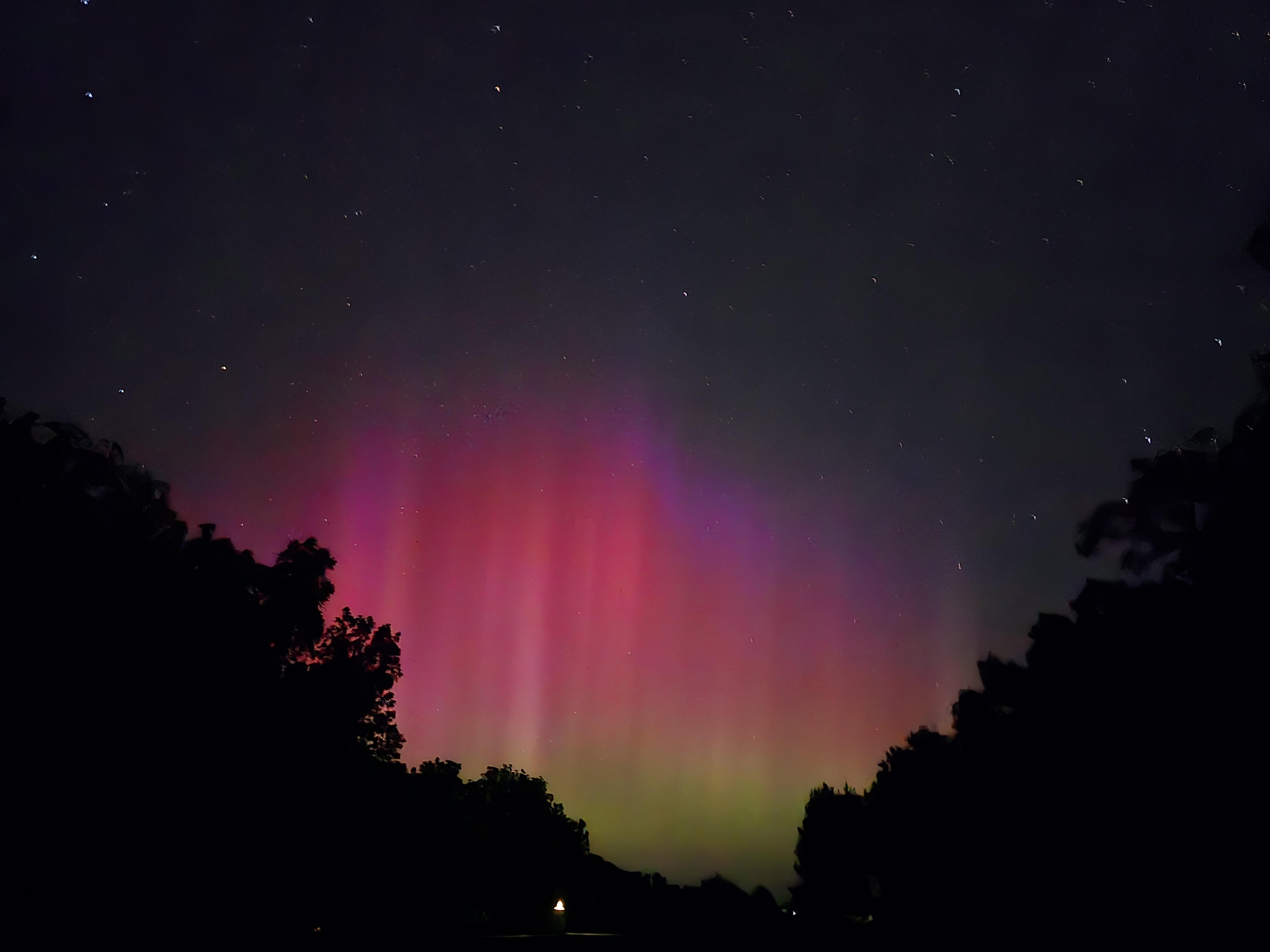
Griffin captured this impressive photograph at 2:39 a.m. local time from St. George, Kansas, U.S.
"Sat the phone on the ground and tilted it up. Easy peasy," Griffin continued.
Astronomer and astrophotographer Yuri Beletsky had one of the best seats in the house during a flight from Melbourne to Santiago.
"The sky was alive with soft splashes of light," Beletsky wrote in a post on X.
Just flew from Melbourne 🇦🇺 to Santiago 🇨🇱 on @LATAM_CHI flight LA804 and saw an incredible aurora from the plane ! 🤩 The sky was alive with soft splashes of light. This flight’s route feels truly special - passing so close to Antarctica, you can almost sense the vastness below.… pic.twitter.com/0Mkh9FstxnJune 1, 2025
Aurora chaser Brendon captured some fabulous shots of the aurora from the North side of Cheyenne, Wyoming.
"Ok, so that was a show," Brendon wrote in a post on X.
Ok, so that was a showNorth side of Cheyenne, Wyoming pic.twitter.com/qFEzJNhHDqJune 1, 2025
Aurora photographer Derick Wilson captured a stunning hyper-lapse of the northern lights dancing over Farmington, New Mexico, at 2:15 a.m. local time.
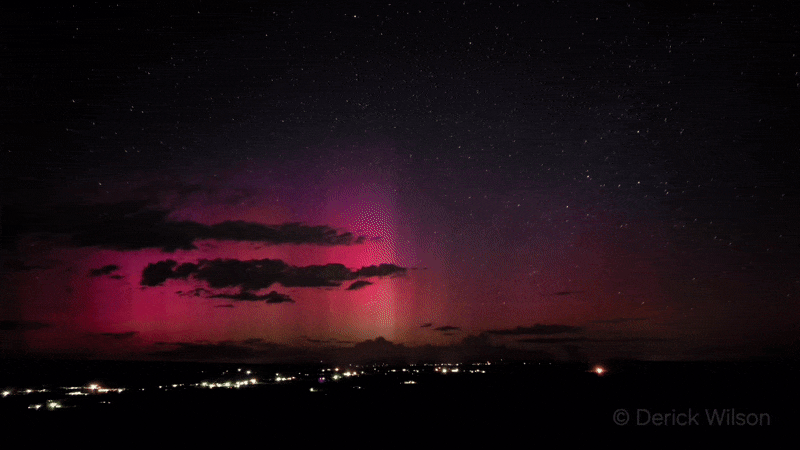
"Visible aurora this far south is such a rare occurrence I knew to keep an eye on the solarwind data," Wilson told Space.com in an email. "When the expected solarstorm arrived early I knew I had to get far from city lights. And it's amazing what cell phone cameras can capture these days."
"Discreet rays occasionally drifted eastward but went diffuse and faded.... For now," Wilson wrote in a post on X.
215amSlowed hyperlapse of the visible #aurora over the last hour north of Farmington NM. Discreet rays occasionally drifted eastward but went diffuse and faded.... For now pic.twitter.com/fwTpXH4X5pJune 1, 2025
The thick smoke from wildfires was no match for the northern lights above Minnesota, U.S.
"Smokey auroras tonight in Northern Minnesota. It was strong enough for the aurora to completely visible to naked eye. As well tint of red color to the naked eye," Gabe Zogo wrote in a post on X.
Smokey auroras tonight in Northern Minnesota. It was strong enough for the aurora to completely visible to naked eye. As well tint of red color to the naked eye. #spaceweather #aurora #auroraborealis #mnwx #northernlights pic.twitter.com/WTBcRXvI2DJune 1, 2025
Robert Erickson saw a stunning northern lights show over Pyramid Lake, just north of Reno Nevada, U.S.
Last nights solar storm did not disappoint! Just north of Reno Nevada at Pyramid Lake @NWSReno @spacewxwatch pic.twitter.com/ajoEnmjtLEJune 1, 2025
Meanwhile, aurora chaser and photographer Noel Bowman captured this delightful scene unfolding above Seabeck, Washington in the early hours of the morning on June 1.
6/1/25 between 2:30‐4:25 am, took photos till 5:25 am, Seabeck, Washington @TamithaSkov @theauroraguy @WeatherNation @ShannonODKOMO @komonews #wawx #pnw #aurora#solarstorm @NWSSeattle @AuroraNotify @AuroraAlertsApp@ScottSeattleWx @chunder10 pic.twitter.com/3qqIeI5PvjJune 1, 2025
Auroras were also spotted over San Diego, California, during the early phase of the solar storm.
"Nice catch! Confirmed #aurora visible on webcams as far south as San Diego, California, USA during the early phase of this ongoing #solarstorm," Space weather physicist Tamitha Skov wrote in a post on X.
Nice catch! Confirmed #aurora visible on webcams as far south as San Diego, California, USA during the early phase of this ongoing #solarstorm. Thanks for reporting! https://t.co/MekMzZlmbSJune 1, 2025
Southern Hemisphere skywatchers also got quite the treat last night, with vibrant red and pink auroras documented above Queenstown, Tasmania.
The southern hemisphere is on fire with red and pink aurora happening now!https://t.co/rSOKoXyKbA pic.twitter.com/sxU7K6qtPWJune 1, 2025
Sai Shankar captured these stunning photographs from Kaikoura, New Zealand, around 9:35 p.m. local time (5:35 a.m. EDT or 0945 GMT).

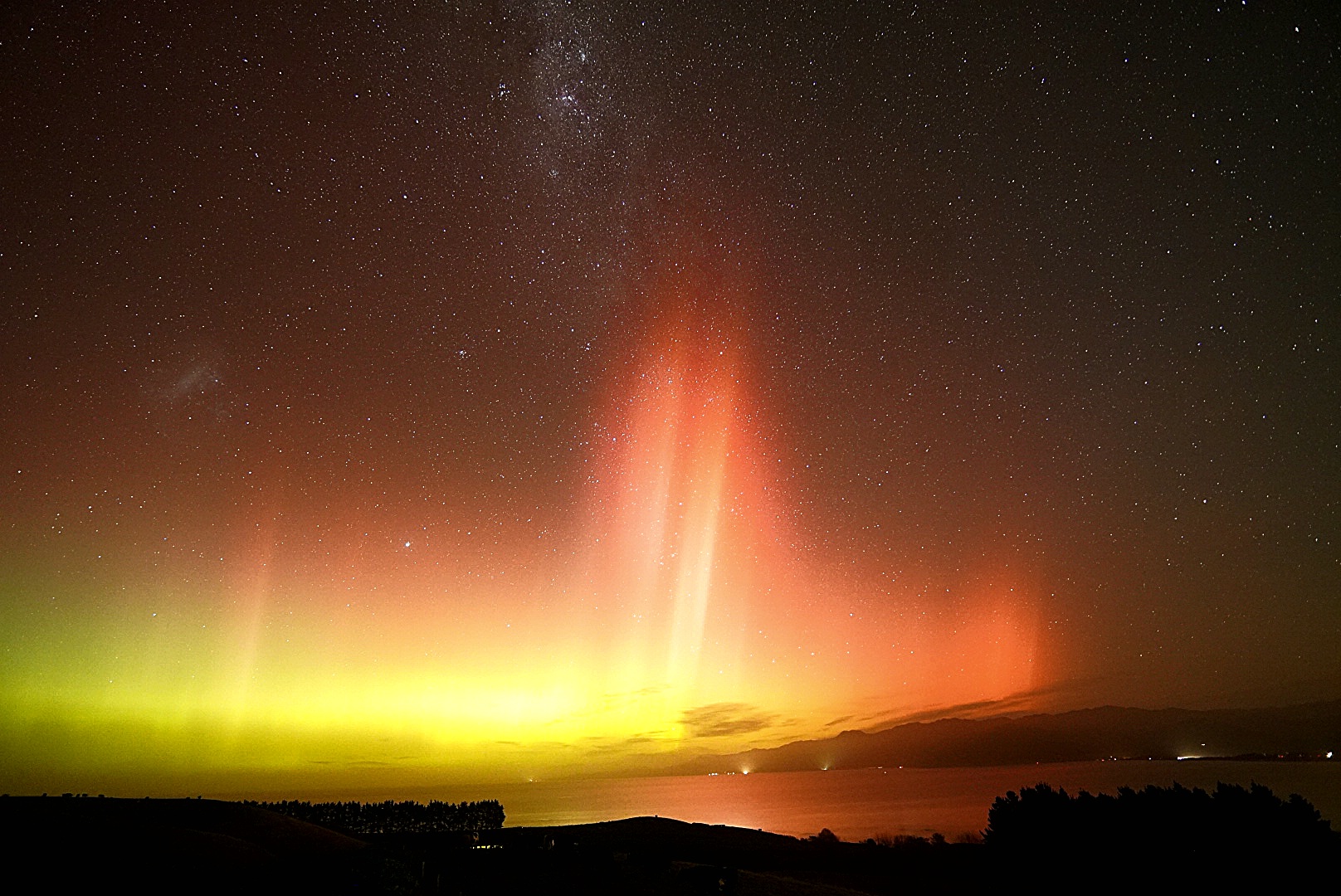
"I saw similar Auroras in May and October of last year, from Banks Peninsula, near Christchurch. This is the first time I've imaged from further north - I happened to be in Kaikoura photographing whales in the morning," Shankar told Space.com in an email.
Amateur astronomer and photographer Paul Stewart captured a striking red aurora show above New Zealand.
"Bit of an #Aurora going on in New Zealand tonight," Stewart wrote in a post on X.
Bit of an #Aurora going on in New Zealand tonight pic.twitter.com/lGToGjuqQ4June 1, 2025
Photographer Mitch Young took these beautiful photographs of the southern lights above Metung, Victoria, Australia around 7:50 p.m. local time.
Aurora's Victoria, AustraliaSome Incredible Aurora's are being captured around the Globe.Photos Below are from Metung, Victoria at 7:50pm local time.10s exposure on an iPhone 16 Pro Max was used.#auroras #GeomagneticStorm #Australia 📷 Mitch Young pic.twitter.com/pPMSJXhlQyJune 1, 2025
Young used 10s exposure on an iPhone 16 Pro Max to capture these shots.
Editor's note: If you snap a great picture of the northern or southern lights and would like to share it with Space.com's readers, send your photo(s), comments, and your name and location to spacephotos@space.com.
Join our Space Forums to keep talking space on the latest missions, night sky and more! And if you have a news tip, correction or comment, let us know at: community@space.com.
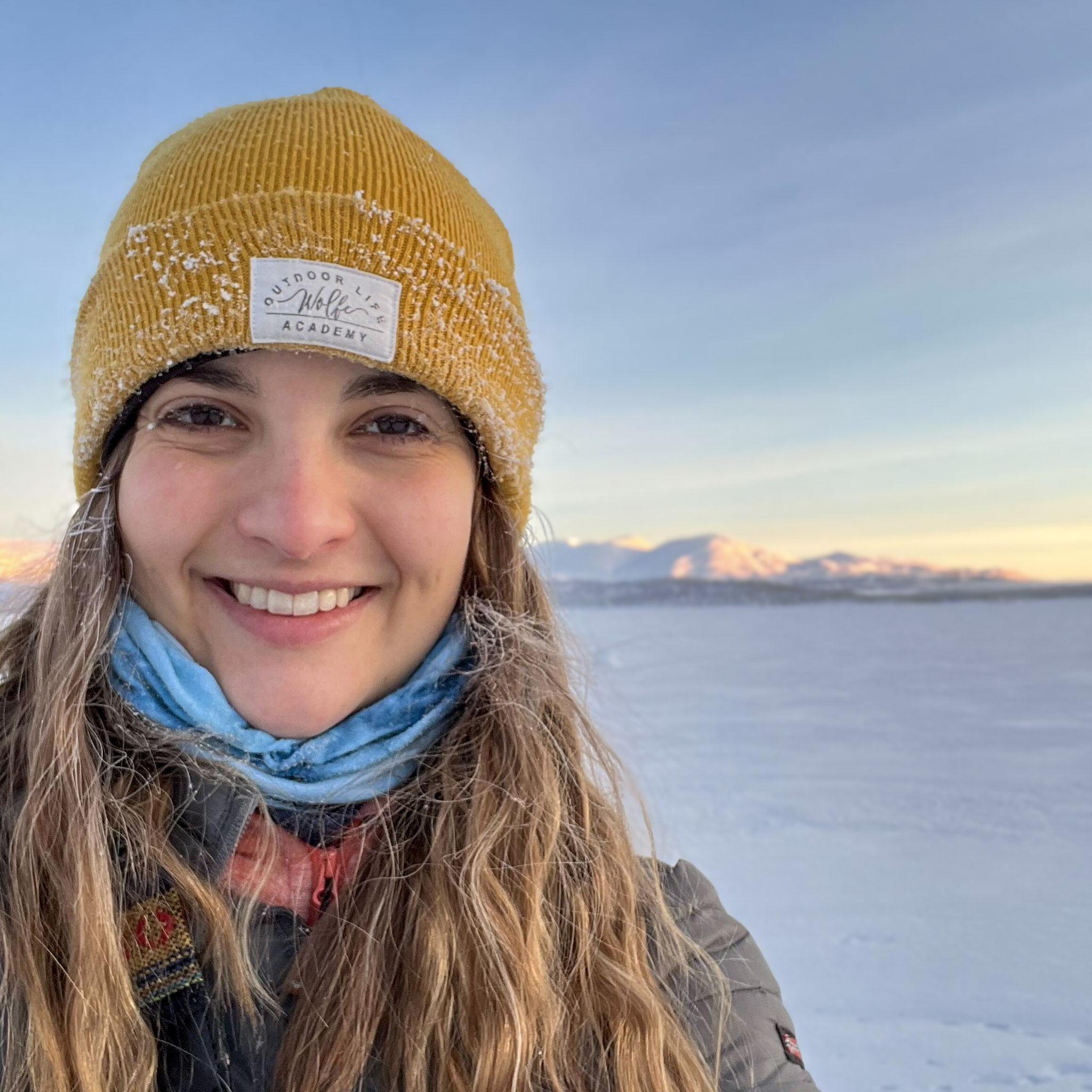
Daisy Dobrijevic joined Space.com in February 2022 having previously worked for our sister publication All About Space magazine as a staff writer. Before joining us, Daisy completed an editorial internship with the BBC Sky at Night Magazine and worked at the National Space Centre in Leicester, U.K., where she enjoyed communicating space science to the public. In 2021, Daisy completed a PhD in plant physiology and also holds a Master's in Environmental Science, she is currently based in Nottingham, U.K. Daisy is passionate about all things space, with a penchant for solar activity and space weather. She has a strong interest in astrotourism and loves nothing more than a good northern lights chase!
You must confirm your public display name before commenting
Please logout and then login again, you will then be prompted to enter your display name.
